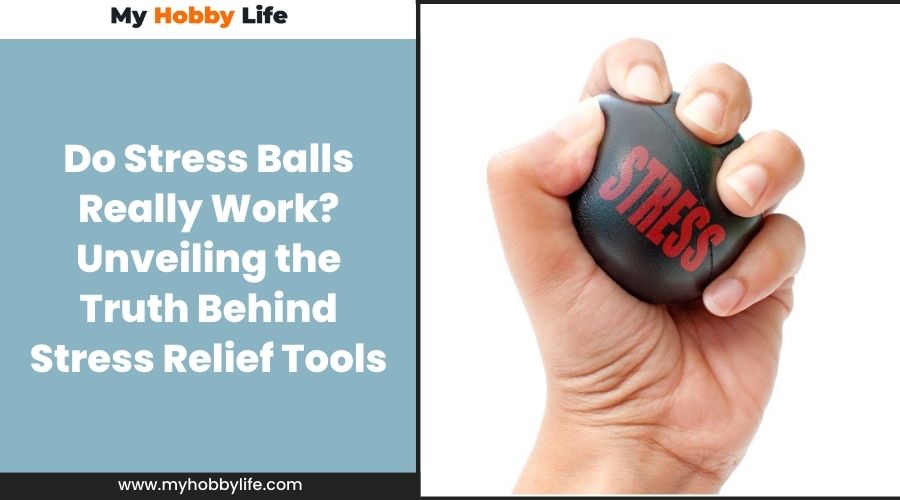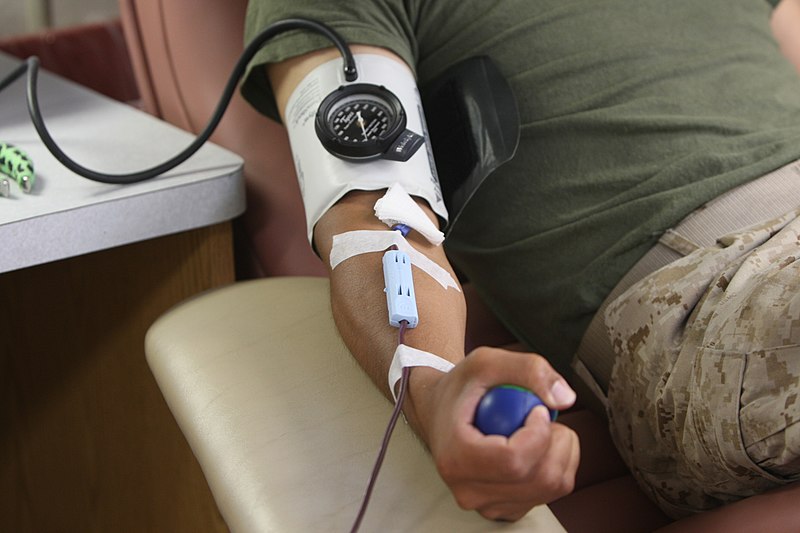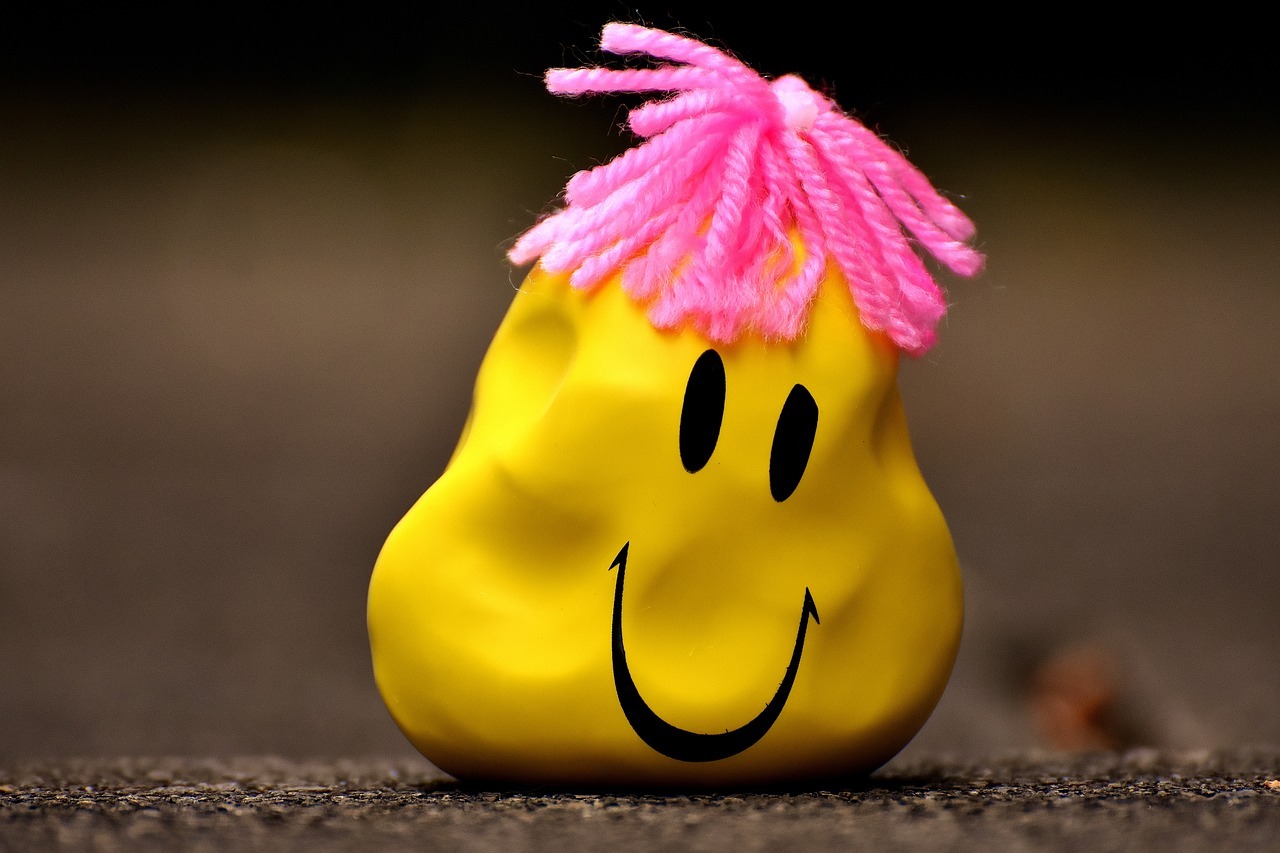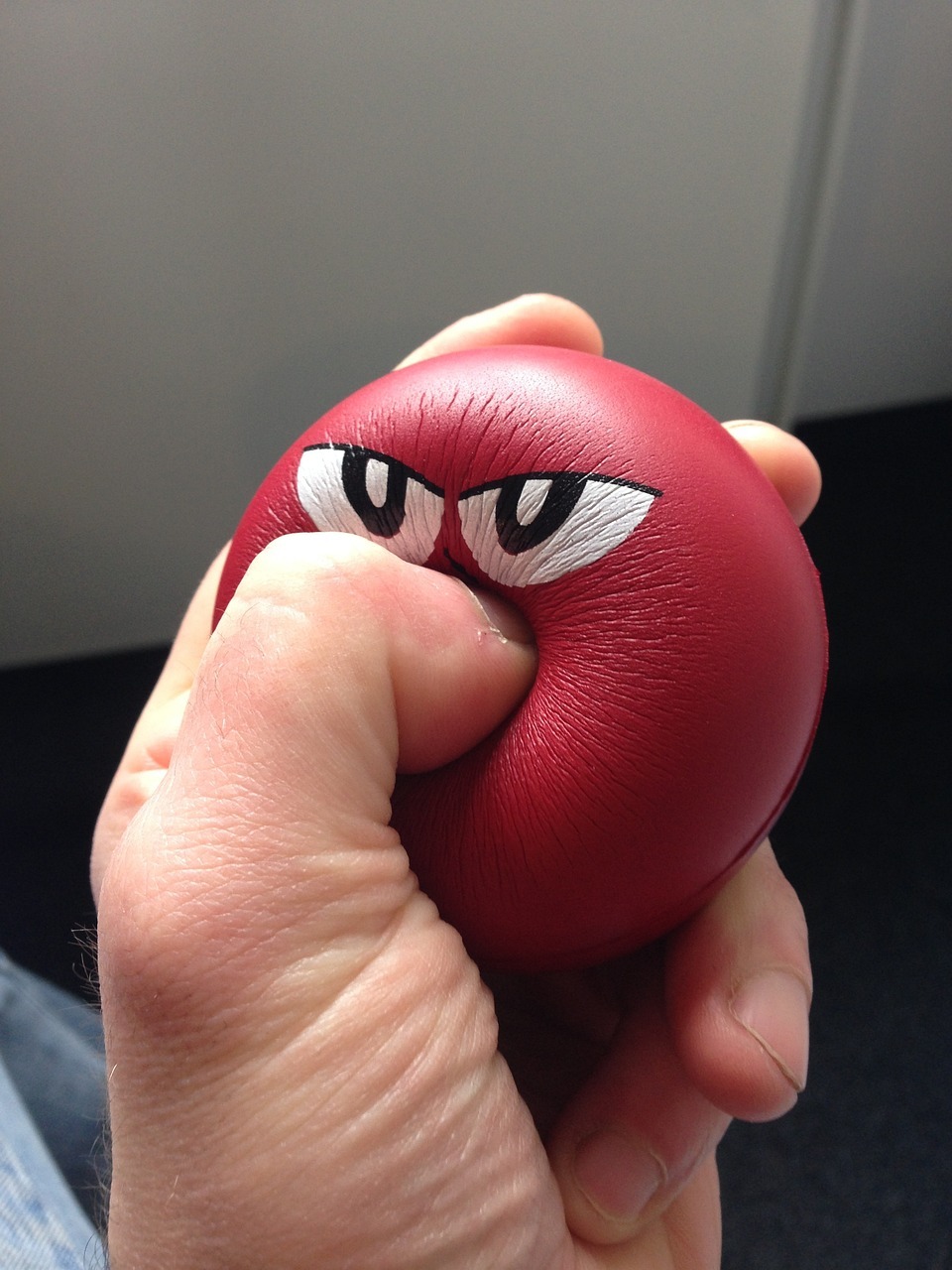Stress balls, those small, squeezable items often found on desks or in the hands of someone facing a tense moment, serve as a popular tool for stress relief. The primary action of squeezing and releasing the ball engages the muscles of the hand and arm in a low-intensity, repetitive exercise. This physical activity can be a form of distraction, redirecting the user’s focus from stressful thoughts to the sensation and action of squeezing.
The effectiveness of stress balls hinges on the principles of tension release and sensory distraction. By engaging with a stress ball, an individual may trigger the release of muscle tension that often accumulates during stress. In addition, this tactile interaction can stimulate the nervous system in a way that has the potential to create a calming effect, thus helping to alleviate feelings of stress and anxiety.
Although the method appears simple, the function of stress balls is supported by the concept that physical activity, even at a minimal level, can contribute to stress relief. They provide a discrete outlet for excess energy and nervousness, which can be particularly beneficial in environments where more vigorous forms of stress relief are not feasible. However, stress balls are but one tool in a vast array of strategies for managing stress and are most effective when paired with other stress-reduction techniques.
Understanding Stress
When discussing stress, it’s crucial to comprehend its nature, varying types, and the physiological symptoms it can manifest. Recognizing stress and its impact is essential for identifying effective management strategies.
Defining Stress and Its Effects
Stress is a response to challenges or pressures. It arises when one perceives that the demands placed upon them exceed their ability to cope. In the face of stressors, the body undergoes a series of physiological reactions health experts often refer to as the “fight or flight” response. This includes increases in heart rate, blood pressure, and the release of hormones like cortisol, illustrating the body’s readiness to face an immediate challenge. Temporary stress can have beneficial aspects, such as heightened awareness and energy, which can improve performance in short-term situations. However, if stress persists, it can lead to adverse effects on one’s health.
Types of Stress: Acute and Chronic
Stress can be categorized into two main types: acute stress and chronic stress.
- Acute Stress: This is a short-term form of stress, typically a response to a specific incident or challenge. It manifests quickly and often intensely but resolves in a relatively short time. Acute stress is characterized by immediate physiological symptoms such as increased heart rate and heightened sensory perception.
- Chronic Stress: This type of stress develops over an extended period and is more harmful. It results from repeated exposure to stressors that an individual perceives as inescapable or overwhelming. Chronic stress can lead to a range of health issues, including anxiety, depression, heart disease, and a weakened immune system.
By understanding these different forms of stress, one can better approach stress management and seek appropriate methods of coping or intervention.
The Role of Stress Balls in Stress Management
Stress balls serve as practical tools in stress management, offering a simple method of relaxation and serving as physical outlets for nervous energy.
Historical Use and Modern Adaptations
Stress balls have been used for centuries, with origins in ancient Chinese culture where they were known as Baoding balls. Traditionally made of iron, they were rotated in the hand to improve manual dexterity. In contemporary settings, these tools have been adapted into softer, more pliable materials that can be squeezed, providing a modern version of stress relief. Today’s stress balls come in various textures and sometimes incorporate aromatherapy to enhance their relaxing effects.
How Stress Balls Promote Relaxation
The act of squeezing and releasing a stress ball can lead to heightened relaxation. This simple repetitive motion creates a focus away from stressors, channeling one’s energy into the physical action of compression. Furthermore, the mechanism of action involves the contraction and relaxation of muscles in the hand and forearm, which can inadvertently engage the brain’s sensory receptors, creating a calming effect.
| Action | Physiological Response |
|---|---|
| Squeezing | Muscle tension, focus redirection |
| Releasing | Muscle relaxation, potential stress reduction |
Stress Balls as a Physical Outlet for Nervous Energy
Stress balls act as a physical outlet for nervous energy, which is common during periods of anxiety or stress. By channeling that restlessness into a tactile activity, they can provide an immediate, albeit temporary, form of stress relief. The physical exertion helps to relieve stress by diverting one’s attention from sources of anxiety to the action of manipulating the ball. Additionally, the repetitive squeezing can serve as a rhythmic activity that may reduce nervous energy and potentially promote a sense of calmness.
| Use Case | Potential Benefit |
|---|---|
| Nervous energy | Redirected into physical activity |
| Repetitive action | Encourages rhythmic, calming motions |
Psychological and Physical Benefits
Stress balls have been recognized for their potential to provide relief in both psychological and physical realms. They are often used to alleviate tension and to aid in certain therapy practices.
Impact on Mental Health and Well-Being
The use of stress balls can lead to improvements in mental health and emotional well-being. They serve as a physical outlet for psychological stress, which can translate into a reduced feeling of anxiety. Psychological studies indicate that the repetitive action of squeezing a stress ball may help in diverting negative thoughts and promoting a state of mental relaxation.
Stress Reduction and Attention Improvement
Stress balls may enhance focus and attention. The action of squeezing and releasing the ball can provide a break from cognitive tasks, which potentially boosts productivity and concentration. This consistent activity might serve as a micro-break for the mind, allowing it to recharge and sustain attention on work or study-related activities.
Benefits for Special Populations
For certain groups, such as those undergoing therapy for hand injuries or individuals with attention-deficit disorders, stress balls can be especially beneficial. They are known to aid in hand muscle rehabilitation and strengthening. Additionally, they may offer a non-disruptive outlet for nervous energy, which can be particularly advantageous for those requiring a physical anchor to enhance their overall sense of well-being.
Stress Ball Design and Materials
Stress balls are designed with various materials that contribute to their effectiveness in stress relief. These materials impact the tactile experience and the ball’s durability.
Variety of Materials and Their Effectiveness
The most common material used in stress balls is polyurethane foam, which allows for a lightweight and squishy stress ball experience. They are often preferred because the softness provides a comfortable tactile engagement for the user, thus proving effective for stress relief. Some stress balls are made with gel or rubber, offering a different texture and resistance that might appeal to different preferences.
- Polyurethane foam: Lightweight and squishy, providing a satisfying compression.
- Gel: Offers a smoother resistance and can sometimes include additional elements like glitter or color-changing properties.
- Rubber: Durable and provides a firmer grip, which could lead to increased effectiveness for some users.
These materials are selected not only for their feel but also for their durability, which is essential for ensuring the stress ball withstands repeated use without degrading.
Different Resistance Levels
Stress balls also come in various resistance levels, which determines how much force is needed to compress them. The resistance level plays a significant role in their effectiveness, as it allows users to choose a stress ball that matches their personal preference for tactile feedback.
- Soft: Easier to squeeze and may be more relaxing for some users.
- Medium: Offers moderate resistance and can be suitable for a wider audience.
- Firm: Requires more force, which might be more satisfying for some individuals who are looking to exert more physical stress.
Understanding the resistance levels is crucial for one to select a stress ball that will provide the best personal benefit. Generally, it is the combination of the chosen material and the intended resistance level that determines the overall feel and effectiveness of a stress ball.
Scientific Research on Stress Balls
Scientific studies have scrutinized stress balls, employing rigorous methodologies to discern their effectiveness in stress management and cognitive function enhancement.
Randomized Controlled Trials and Outcomes
Randomized controlled trials (RCTs) represent a gold standard for evaluating clinical evidence due to their design, which minimizes biases and confounding variables. Notably, a 2006 study found that sixth graders using stress balls had improved focus and attention spans during tasks. They offer a tactile distraction that could help in managing temporary stress and possibly aid in improving concentration. Other RCTs, however, present a more nuanced picture, with some showing significant reductions in stress and anxiety levels among participants, while others have not observed substantial benefits.
Systematic Reviews and Meta-Analyses
Systematic reviews and meta-analyses synthesize findings from multiple studies to deliver a more comprehensive understanding of a research topic. Systematic reviews of the literature on stress balls have included differing conclusions, reflecting the variation in outcomes of individual studies. While some meta-analyses suggest that the use of stress balls and similar fidget objects may have a palliative effect on stress and anxiety, others find the evidence less convincing, calling for further investigation to assert strong clinical recommendations.
Through systematic examination, these reviews have contributed to a body of knowledge that, while acknowledging some positive outcomes, also highlights the complexities of quantifying the efficacy of stress balls. They underscore the importance of context and individual differences when considering the impact of sensory tools on psychological well-being.
Health-Related Applications
Stress balls are applied in various health-related contexts to provide physical and psychological benefits. These applications include use in physical therapy, support for hemodialysis and dialysis patients, and potential impacts on blood pressure and heart rate.
Stress Balls in Physical Therapy
Physical therapists often incorporate stress balls into treatment regimens to strengthen muscles in the hands and forearms. The squeezing action aids in improving grip strength and dexterity, which can be particularly beneficial for patients recovering from injuries or suffering from conditions like arthritis.
Use by Hemodialysis and Dialysis Patients
Patients undergoing hemodialysis and dialysis may experience anxiety and discomfort during treatment. Using stress balls during sessions can contribute to stress reduction and enhance patient comfort by providing a simple distraction from the procedure and a way to release tension.
Impact on Blood Pressure and Heart Rate
Preliminary studies suggest the repetitive motion of squeezing a stress ball could potentially lower blood pressure and heart rate by promoting relaxation. While not a substitute for medical treatment, stress balls may offer a supplementary method to manage high blood pressure alongside prescribed regimens.
Complementary Techniques and Lifestyle Changes
In seeking relief from stress, incorporating stress balls into a larger framework of relaxation techniques and mindfulness practices can enhance effectiveness. Utilizing stress balls in tandem with other strategies may offer a more holistic approach to managing stress.
Incorporating Stress Balls into Mindfulness Practices
Using stress balls during mindfulness practices can anchor one’s attention and enhance the sensory experience of meditation. As individuals focus on the sensation of the stress ball, they can more easily remain present, aiding in the cultivation of a mindful state. The tactile feedback serves as a physical point of concentration which can keep the mind from wandering, making mindfulness exercises more accessible for beginners or those struggling with focus.
Combining Stress Balls with Progressive Muscle Relaxation
Progressive muscle relaxation (PMR) is a technique wherein one intentionally tenses and then relaxes different muscle groups. Integrating stress balls into this practice allows for targeted tension and release, especially in the hands and forearms. Here’s a concise step-by-step process:
- Hold the stress ball and inhale deeply, concentrating on tensing the muscles of your hand.
- Maintain tension for three to five seconds.
- As you exhale, allow the muscles to release fully, noticing the sensation of relaxation.
- Repeat this action multiple times, progressively working through muscle groups as you combine it with breathing exercises.
This combination can efficiently reduce physical tension, which often accompanies stress, and can be a practical component of relaxation techniques for those who need to feel an immediate physical response in their stress reduction endeavors.
Practical Tips for Utilizing Stress Balls
Stress balls can be a practical tool for stress relief and tension reduction when used correctly. Here’s how one can effectively incorporate them into their daily regime for maximum benefit.
Effective Squeeze Techniques
Proper squeezing techniques can enhance the stress-relieving effects of stress balls. They are designed to provide resistance that aids in the alleviation of muscle tension through repetitive squeezing exercises. A beneficial approach involves holding the stress ball in the palm and exerting firm, steady pressure for a few seconds with the fingers before releasing. This cycle should be repeated multiple times.
Progressive Muscle Relaxation (PMR):
- Squeeze: Hold the stress ball and squeeze for 5 seconds.
- Relax: Release the squeeze gradually over 5 seconds.
- Repeat: Perform this sequence 10 times per hand.
Performing this simple exercise can aid in reducing muscle tension and promoting relaxation, especially during short work breaks or while engaging in activities such as watching TV or waiting in line.
Integrating Stress Balls into Daily Routine
One can integrate stress ball exercises seamlessly into their daily routines to aid with stress management and potentially improve sleep quality.
Desk Work: Keep a stress ball at the workstation. Take short breaks to squeeze the ball, which can help in maintaining focus and may reduce the physical tension often associated with prolonged periods of desk work.
Travel and Commute: A stress ball can serve as a portable tool for relaxation during travel. It can be especially helpful in managing tension and anxiety during commutes.
| Daily Activity | Frequency |
|---|---|
| While working at a desk | Once every hour |
| During meetings or calls | As needed for relaxation |
| Before sleep | 5-10 minutes of PMR technique |
Using a stress ball should be looked at as a simple exercise, rather than a panacea. Regular use aligns with the principle of relaxation and stress relief, promoting a sense of calm and potentially aiding in better rest patterns.
Limitations and Considerations
While stress balls may offer a form of stress relief for some, they are not universally beneficial and might come with certain limitations and considerations. It’s essential for users to evaluate the context and their individual circumstances when relying on stress balls for relaxation.
When Stress Balls May Not Be Beneficial
There are specific scenarios where the effectiveness of stress balls could be limited. For individuals experiencing chronic stress, relying solely on a stress ball may not adequately address the underlying issues. Stress balls might offer only temporary relief and cannot replace professional therapies or treatment plans. In cases of severe anxiety or stress-related disorders, the chance that a stress ball alone will provide sufficient relief is relatively low. Additionally, for some, the act of squeezing a ball repeatedly could potentially lead to muscular tension, rather than release, especially if used excessively or improperly.
Potential Side Effects and Precautions
While generally safe, using stress balls may still pose certain side effects and require precautions for some users. It is possible, albeit rare, for individuals to experience:
- Muscle tension: Overuse can lead to muscle strain in the hands or arms.
- Headaches: If the stress ball becomes a source of frustration rather than relief, it may contribute to or exacerbate tension headaches.
One should also take care not to exert excessive grip on the ball, as this might lead to fatigue in the hand muscles. If any physical discomfort, such as an upset stomach, fatigue, or headache arises from using a stress ball, it is advisable to discontinue use and consult with a healthcare professional. Users with pre-existing conditions related to the hands or arms should exercise additional caution before incorporating stress balls into their routine.
Frequently Asked Questions
Stress balls are widely recognized for their role in managing anxiety and stress. Below are common questions regarding their functionality and benefits.
How can using a stress ball alleviate anxiety?
Using a stress ball can provide a physical outlet for tension. The repetitive action of squeezing the ball promotes focus and a calming effect, which can alleviate symptoms of anxiety.
What are the recognized benefits of using stress balls?
Stress balls help with stress relief by redirecting energy and nerves into the squeezing motion, potentially lowering stress levels. They’re also used to improve grip strength and assist in the rehabilitation of hand muscles.
Can stress balls be detrimental to hand health?
Excessive or improper use of stress balls can lead to hand strain or exacerbate existing conditions like arthritis. It’s important to use them in moderation and heed any signs of discomfort.
Is there scientific evidence supporting the efficacy of stress balls for stress management?
Some studies suggest that stress balls can reduce anxiety in patients, proving beneficial during medical procedures. However, results are varied and more research is required to make definitive claims.
In what ways are stress balls considered useful for managing anger?
Stress balls can serve as a healthy distraction and a non-destructive way to channel anger. By concentrating on the act of squeezing, individuals may find it easier to work through angry emotions.
What considerations should adults keep in mind when using stress balls?
Adults should consider the firmness of the ball for comfort and the potential need for different levels of resistance, depending on their individual stress levels and dexterity. It’s advised to avoid overuse to prevent hand strain.




